Aquarium for beginners: important tips. My first aquarium: which one to choose, how and where to install?
A beautiful aquarium in the house brings joy into our lives while contemplating fish and has a great effect on the psychological component. Every novice aquarist involuntarily thinks about where to start, in order to choose everything for the aquarium correctly, start it correctly the first time and prevent the death of fish.
 Before purchasing a container for fish, it is necessary to carefully consider its design and shape so that it fits as naturally as possible into the interior of the room, does not interfere with its main purpose and is located in a place convenient for viewing.
Before purchasing a container for fish, it is necessary to carefully consider its design and shape so that it fits as naturally as possible into the interior of the room, does not interfere with its main purpose and is located in a place convenient for viewing.
According to the design, aquariums are on a stand, on legs, suspended, corner, frame and frameless. In form, they are represented by more than a wide choice, the main of which are:
- spherical (round);
- cubic (square);
- parallelepipedal (rectangular);
- parallelepipedal with a convex viewing glass (panoramic);
- prismoidal (with regular polygon bottom, usually high, for floor installation);
- pyromidoidal (triangular, for closed-type aquariums).
The main parameters for choosing a container for keeping fish from a novice aquarist are the following factors:
- correct installation, which should allow various manipulations during operation (removing or installing the cover and lighting, feeding fish, planting plants, cleaning the filter, bottom siphon, etc.);
- exclusion of direct sunlight on its surface;
- the number and size of the population of the aquarium (the required volume of the aquarium depends on this. If there is no certainty for specific fish, then take at least 1 liter of water per 1 cm of adult fish, i.e. if you want to keep 10 fish 8 cm long, you need an aquarium more than 80 liters, this will avoid overpopulation and allow its inhabitants to develop well and feel comfortable).
Aquarium accessories
 Together with the aquarium, they offer covers with built-in lighting and cabinets for them. If there is no specific place to install an aquarium, then you can take advantage of this offer. A lighted aquarium lid will save many fish species from jumping out, reduce the evaporation of water into the atmosphere of the room, and also provide plants with artificial lighting and allow you to control the length of daylight hours in the pond. The cabinet is suitable for storing all kinds of accessories (net, tubes, suction cups, feeders, literature, etc.), feed and other things related to the aquarium.
Together with the aquarium, they offer covers with built-in lighting and cabinets for them. If there is no specific place to install an aquarium, then you can take advantage of this offer. A lighted aquarium lid will save many fish species from jumping out, reduce the evaporation of water into the atmosphere of the room, and also provide plants with artificial lighting and allow you to control the length of daylight hours in the pond. The cabinet is suitable for storing all kinds of accessories (net, tubes, suction cups, feeders, literature, etc.), feed and other things related to the aquarium.
Aquarium equipment
There is a standard set of equipment for aquariums:
- backlight (the choice of lamp power and duration of illumination during the day depends on the inhabitants and plants);
- water heater (it is better to choose with automatic temperature control);
- aerator and water filter can be both combined and separate (power depends on the volume of the aquarium).
The selection of soil and decorations depends on the inhabitants, but fine-grained rounded gravel without sharp edges is considered universal. The thickness of the soil at the bottom should be from 5 to 7 cm, this will allow plants to take root and grow well. Castles, sunken ships, etc. can be used as decoration and creating a unique interior.
Choice of inhabitants and vegetation
 Almost all viviparous fish are suitable for beginner aquarists: swordtails, platies and guppies. They are beautiful, graceful, not difficult to maintain and hardy. The maintenance and reproduction of these species will allow you to master the basics of aquarism with minimal financial and time investment.
Almost all viviparous fish are suitable for beginner aquarists: swordtails, platies and guppies. They are beautiful, graceful, not difficult to maintain and hardy. The maintenance and reproduction of these species will allow you to master the basics of aquarism with minimal financial and time investment.
Several small catfish can be launched to viviparous fish. They differ in coloring, body shape and behavior. will add sophistication to the aquarium and will eat leftover food and clean plants. Ancitrus catfish suckers are perfect.
From bottom inexpensive plants, you can use elodea, vallisneria, cryptocarina, from surface ones - richia or duckweed. And you can also add lumps of moss - cladophora or Javanese moss.
Running an aquarium
It takes about two weeks before the beautiful fish are released into the aquarium. In one day you can do:
- laying soil, planting plants, installation of decorations for lighting, heating, filter-aerator;
- filling the aquarium with tap water;
- turning on the heater and filter-aerator.
After that, you need to wait a week for the chlorine to evaporate from the water during this time. It is allowed to add various normalizers to the water, which improve the water parameters. Before using them, it is necessary to consult with competent aquarists or sellers who know the parameters. tap water in your region.
After a week, you can launch the first, most hardy inhabitants - ampoule snails, newts, frogs or shrimps. Often the first are snails. They favorably influence the formation of the ecosystem in the aquarium. Water in a room pond is gaining stability for about a month and may become cloudy. Over time, it will clear and become transparent. And only depending on the state of the water and the well-being of the ampoule, after about a week you can launch inexpensive fish. You can read more about the first launch of the aquarium.
From practical experience
![]() There are several general advice on keeping and breeding fish, but it all depends on the specific inhabitants of your aquarium.
There are several general advice on keeping and breeding fish, but it all depends on the specific inhabitants of your aquarium.
- It is better to purchase a rectangular aquarium without panoramic glass, while its length should be greater than the height, and the width less than the height.
- An aquarium volume of about 100 liters will allow you to maintain a closed ecosystem (the state of the water in terms of temperature, chemical and biological ranges will be less subject to sudden changes, which will affect the well-being of the fish), and will also require lower maintenance costs.
- Maintaining a constant temperature will save the fish from many diseases.
- You can not overfeed the fish, but it is better to feed once a day. The food should be varied - live, frozen, dry (if you feed it constantly alive, then the fish begin to get fat and it becomes difficult for them to breed).
- Change the water in the aquarium to do weekly with a replacement of up to 30% of the total volume. Cleaning and siphoning the bottom in the first month after launch is not necessary. Depending on the number of fish, the pollution of the bottom or chemical indicators water, these activities should be carried out approximately once every two to four weeks.
- The water filter and aerator in the aquarium should work around the clock.
- Lighting must be controlled, otherwise excessive growth of algae or plants will begin. The duration of illumination per day is in the range from 8 to 12 hours.
The specialists of the program "Cheap and cheerful" (Channel One) will tell you how to choose an aquarium:
Which aquarium to choose?
Buying your first aquarium, you don’t even think about which aquarium is better to choose. What finances were enough, then I bought it. This suggests that often the choice of an aquarium does not come down to the question of which is better, but to the question of individual capabilities. Therefore, first of all, it is necessary to determine the budget, it must also be borne in mind that spending does not end with the purchase of an aquarium alone. At a minimum, you will need to buy more: a filter and aeration, a thermostat, soil, the fish themselves. It would be nice to buy: decorations, plants (live or artificial), aquarium equipment (a net, a siphon, a magnetic scraper, etc.), as well as for setting up a biosystem.
In addition, an important role is played by the place where the aquarium will stand! Much depends on the location of the aquarium: its volume, shape, purpose, and so on. For example, if you decide to put the aquarium in the corner of the room, then in our opinion it is better to purchase a corner aquarium. Such an aquarium will fit well into the interior, will not take up much space, and will give a good panoramic view of the aquarium.
It is also necessary to think in advance: what and who will be in the aquarium. The conditions for keeping aquarium inhabitants are different. For example, some fish need a large aquarium, while others need a small aquarium. Some need a long aquarium, while others need an aquarium cover because of the jumping ability, and so on.
Analyzing the Internet, as well as from personal experience, we can recommend a rectangular aquarium with a volume of 100-200L.
The volume of such an aquarium allows you to have many hydrobionts: fish, plants, snails, shrimps, etc. The dimensions of such an aquarium meet the needs of many people, and the prices do not bite much.
What else should be considered when choosing the best aquarium.
All aquarists, unanimously, recommend taking an aquarium of large volume from 100 liters. It is right, because it is easier to take care of such an aquarium, it is easier and faster to adjust the biobalance, adaptation and life of aquarium inhabitants in such an aquarium is better.
However, do not think that small aquariums are worse, no. These aquariums just need a little more attention. On a small aquarium (20-50l.) You can “practice” and understand whether you are interested in aquarism in principle or not, fill your hand, and then decide whether to take a large aquarium or not.
There are small round-shaped aquariums for sale. As a rule, betta fish live in them. Note that for a child, for a novice aquarist, such an aquarium has a place to be. But you need to think about having at least filtration in the aquarium. To be normal temperature regime. It is necessary to study the specifics of caring for such an aquarium. After all, the issues of biobalance and the nitrogen cycle are more acute than ever in such aquariums. Most best option this kind of aquariums - .
On sale you can also find tall, narrow aquariums made like aquarium paintings. Such aquariums are relatively inexpensive, but the title of the best, well, they don’t pull. Firstly, it is difficult to care for them, and secondly, aquarium fish will be uncomfortable in them, for them the main thing is the length and width of the aquarium, and not the height. Height also plays a role, but in conjunction with length and width.
The most common aquarium shape is rectangular, but a panoramic aquarium or an aquarium with a convex front glass can also be recommended. Panoramic aquarium consists of 6 faces (walls) - which gives more viewing angles. And an aquarium with a convex front wall gives volume and looks more interesting than an aquarium with straight glass.
When buying an aquarium, pay attention to its lid. Lids can be plastic, wood or glass. Main question- this is the lighting built into the lid. If there are many in the aquarium aquarium plants, the issue with lighting is best resolved immediately. Pay attention to fluorescent lamps for their quantity, power and characteristics. It is advisable to consider the possibility of adding lighting under the cover.
When buying an aquarium, you should carefully check it for chips and microcracks. Keep in mind that even the smallest crack under water pressure will sooner or later turn into a huge hole. This rule is especially true if the aquarium is purchased through an online store. Movers are not very ceremonious with the goods. Check everything carefully when you deliver the aquarium to your home.
Talk about choice the best aquarium You can do a lot, but as they say, it's better to see once than hear once. Therefore, below we turn to a visual study of the issue.
Aquarium shapes

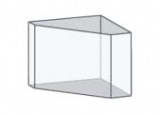
Corner aquarium 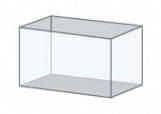
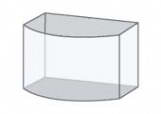
Rectangular with convex glass 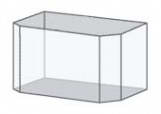
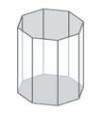
Panoramic Octahedron
more forms 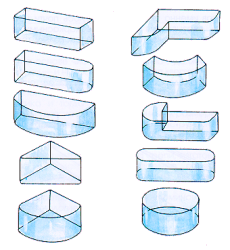
Now let's see on the most popular aquarium shapes
Shared Aquarium- designed to keep fish different kind. As a rule, fish are selected in such an aquarium according to the principle of general compatibility. Most hobby aquariums are community aquariums.
species aquarium- an aquarium that contains only one species of fish. A typical example is an aquarium with discus. Discus are called the kings of the aquarium and as a rule they are kept separately, because they are expensive, large, have their own specifics and conditions of detention.
spawning aquarium- designed for fish breeding, spawning, incubation of eggs and rearing of juveniles. As a rule, such aquariums have a small volume and special conditions are created in such aquariums (temperature, lighting and certain parameters water - dH, pH, kH), which contribute to the spawning of certain fish. The spawning aquarium can also be divided into incubator- designed for growing caviar, fish larvae, nursery aquarium- it is intended for cultivation of the grown up juvenile fry.
In form and function, a spawning aquarium is no different from other aquariums, it is needed only as a separate reservoir. Thus, if you want to breed fish, in addition to a general or specific aquarium, you need to purchase a spawning one.
Quarantine aquarium or medical- like spawning, this is a separate reservoir, but intended for testing and adapting newly purchased fish, treating sick fish.
In such an aquarium, quarantine is arranged for new fish, so as not to bring the infection into the general aquarium. The need for quarantine is due to the fact that even if you bought outwardly healthy fish, signs of the disease may appear in a week or two. During this period, the fish in the quarantine aquarium are checked and, in addition, adaptation measures are taken. Adaptation is needed. some fish do not tolerate a sharp change in the parameters of the aquarium water.
A quarantine aquarium is especially needed if you buy fish at the Bird Market, as a rule, there are a lot of sick fish in such markets. In pet stores, this risk is less, but still there.
In addition, a quarantine aquarium can be used as an aquarium for the treatment of sick fish. Treatment can also be carried out in the general aquarium if it is a contagious disease, for example, ichthyphthyriasis. But, if this is an individual sore, it is better to treat the fish separately.
Aquariums can also be divided into:
Biotope - it imitates a single habitat, underwater landscape (lake, stream).

Dutch - an aquarium designed for aquarium plants.
When choosing an aquarium for a home, it is important to know the answers to questions related to the maintenance and maintenance of an aquarium, additional equipment, and others, especially if you are new to this business. There is a wide variety of aquariums, all of them differ in functionality. Before you go to the pet store to buy a fish house, it is advisable to listen to the advice of specialists. Then he will not cease to please you for many years.
Cozy Aquarium
The first and most important thing is the size of the aquarium. Larger aquariums have the advantage of staying cleaner longer, so it will be easier to maintain the necessary ecosystem for the inhabitants. The size of the aquarium significantly affects the mood and condition of the fish that live in it.
So, fish living in a small aquarium stop growing and start to get sick, and if there are a lot of them, they die due to overpopulation.
To avoid such unpleasant consequences, choose the size of the aquarium, taking into account the number of future residents.
The optimal volume is 60 - 100 liters. If you plan to start fish 6 - 7 cm long, choose a larger aquarium - 200 - 250 liters. These ratios are approximate, so the rule is appropriate here: the larger the aquarium, the better. Snails are an important part of a complete aquarium ecosystem and grow best if they are at least 60 cm deep.
Fish need a stable water temperature to thrive, and small aquariums can't keep that constant. A fluctuation of even a couple of degrees will negatively affect the delicate balance of the biological environment and subsequently the health of the fish.
Arrangement of an aquarium
Now it's time to decide which ones will inhabit the aquarium. Based on this, you should create a landscape similar to the natural habitat of this species. Some species of fish feel comfortable among a large amount of algae, others need more stones.
Many replace live algae with artificial plants. Although it is not forbidden, remember: artificial plants are not in the slightest comparison with real, living, capable of maintaining a special environment in an aquarium.
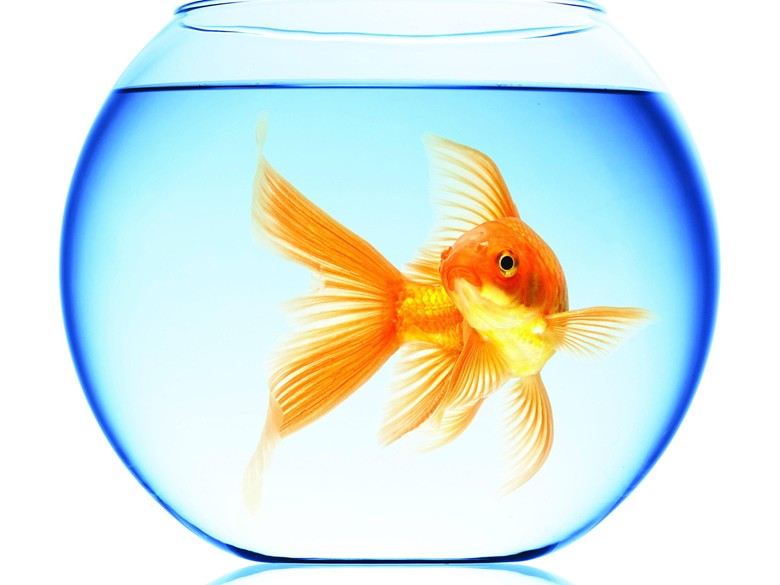 Wrong aquarium
Wrong aquarium The shape of the aquarium has a direct impact on the condition of its inhabitants. A round aquarium, although it enjoys a certain popularity, greatly distorts the image and the fish in such a dwelling, to put it mildly, are not comfortable. Narrow but tall aquariums no more than stylish decoration rooms - the fish in it are bad, as they must swim along, and not from top to bottom.
And remember - we are responsible for those we have tamed!
Aquarium maintenance and cleaning
If you find an error in the text, then select this area with the mouse and click Shift+Enter or . Thanks!
Hello everyone, dear Aquablog readers. I am glad to see you again on the pages of this resource and as a thank you from me, I have prepared for you another article on the topic: How to choose an aquarium? And indeed, this question is asked by many novice aquarists, and they are asked very relevantly, unless of course they have already bought it, and then they ask if I took it. In this article, or rather in the first part of this article, I will try to reveal for you, dear readers, the maximum subtleties in this difficult matter - choosing an aquarium. So. let's get started :)
First things first, let's define what aquariums are. On the this moment There are two main types of aquariums: decorative and special. These are such large groups that they had to be divided into subgroups, which we will now also analyze. A decorative aquarium can be a collection, species, paludarium, Dutch or terrarium.
Special aquariums are divided into the following subgroups: incubator, spawning, quarantine aquarium, nursery and experimental. Most novice aquarists start their journey by choosing the shape of the future aquarium, its size and finish.
So, in principle, you can choose any shape of the aquarium, from a round column to ordinary rectangular aquariums. The main thing when choosing an aquarium is to harmoniously fit it into the design of the room where it will be installed. There is another option: you want to put it in a special niche in the closet and you need an unusually shaped aquarium. You won’t be able to make an aquarium yourself with rounded glasses, so it’s better to order from a master or buy in a normal store.
Often, aquariums of unusual shapes are used as partitions between rooms, in furniture niches. But with all this, aquariums with unusual shapes, built into niches are somewhat inconvenient to maintain. If you want to buy products from our experts, buy the company, but be prepared to shell out a decent amount for it! Only you can also get a fake and a fake, as is often the case in other areas of trade, but at least I have not heard of this. As they say, forewarned is forearmed.
Most aquariums today are glued, so when you buy a ready-made jar from the pet store, inspect it carefully for cracks, chips, bumps, scratches, or broken corners. Special attention give the seams, the silicone should be evenly distributed throughout the seam and it should be free of voids. All of these points above play a key role, since an aquarium with a broken manufacturing technology can play a cruel joke with you. Let's take a closer look at the parts of the aquarium!
Glass
As I said, the shapes of glasses can be different and they are usually made from acrylic glass(or plexiglass) and silicate glass (so-called display glass). In their qualities, they differ significantly from each other. If your area allows and the interior of the room requires a large aquarium, then it is better to stop at an aquarium made of acrylic glass. Aquariums of medium and small volumes can be made from display glass.
Acrylic glass is much less dense than silicate glass. Take two aquariums made of acrylic glass and silicate glass and you will feel the difference in the weight of the jar. Only, it’s not the frame itself that exerts the main pressure on the pedestal in the aquarium, but the water itself and interior decor. If you buy a large aquarium, you need to choose the appropriate cabinet for it so that it does not sag under the weight of all this mass and does not warp. In no case is it allowed to protrude to the limits of the pedestal of parts of the aquarium, let the best base of the pedestal be a couple of centimeters more area the bottom of the bank.

Aquariums made of plexiglass will keep warm better, which is very useful for our post-Soviet countries, as it happens that the light is turned off for several days in winter in frost, and the aquarium is not heated all this time.
Silicate glass is hard to scratch and is harder, though rather brittle. Scratches on glasses significantly reduce their strength, because the surface tension the glass itself. If, nevertheless, a scratch is on the glass, you are unlikely to be able to get rid of it without a trace.
Standard rectangular aquariums are made mainly of silicate glass. It's just that the technology for making curved glass is quite complicated. For example, I don’t like curved glass aquariums for one simple reason - they distort great inner world aquarium.
Another advantage of acrylic over silicate glass is that you can drill into acrylic, which is very handy when you want to attach a terrace or a shelf to the aquarium wall inside. By itself, acrylic is a soft material and more ductile and light. It is much harder to break it, but it is easier to scratch it. To avoid scratching the acrylic glass, wipe it regularly with a soft flannel or other soft cloth. Just before wiping the glass, carefully inspect the cleaning material, abrasive particles can get on it and you can aggravate the situation.
Acrylic glass is most widely used in the manufacture of panoramic aquariums various forms. And one more plus of acrylic is that it is safe from injury, plus the bottom of acrylic glass will be more reliable if the base of the cabinet is uneven.
Glass thickness and quality
Glass should not have scratches, cracks, chips and shells. When buying an aquarium, carefully examine the glass: even the smallest scratch can be evident after you fill the aquarium with water and turn on the light.
What can you say about the thickness of the aquarium glass? The larger the volume of the aquarium, the thicker the glass from which it is made should be. I have a blog post about, so there is a picture that shows the dimensions of the aquarium and, accordingly required thickness glass. Remember one thing - the higher the aquarium, the thicker the glass needed.

If you take two aquariums of the same volume, only one is rectangular and the second is angular, an aquarium with curved glass will be more expensive. This high cost is justified by the number of bent walls, the number of operations for the manufacture of stiffeners, a curved bottom, and so on. Therefore, I advise you best to buy a standard type of aquarium - rectangular without any show off. And there, of course, it's up to you, maybe your interior design requires only a fendipers aquarium.
Aquarium seams
The seams of an aquarium can say a lot, for example, about the quality of the product as a whole. There should be no growths, bumps or other defects on the seams. If you saw silicone ointments on the walls of the aquarium, then you can congratulate you - you bought a low-quality product. The color of the sealant does not matter. You can take both black silicone and white. According to numerous experiments, one thing became clear that with normal gluing technology, the glass in the aquarium will burst faster than the seam will break.
glass end
Pay attention to the ends of the glass on the aquarium. If they are well polished, then this good indicator. An aquarium made by artisanal methods will definitely be cheaper. Glasses with polished ends will be safer during gluing, plus microcracks are removed by grinding. It is because of these microcracks that aquariums of large volumes are destroyed.
Stiffening rib
Glass strips are used as stiffening ribs, which serve to strengthen the walls of the aquarium. The thickness of the stiffening ribs will be the same as that of the main glass and they can be up to 5 centimeters wide. If the aquarium is longer than half a meter, then the presence of stiffeners is a mandatory aspect.
Glue the stiffeners perpendicular to the glass of the aquarium (front and back wall 2-3 cm from the top of the aquarium). In addition to strengthening the aquarium, the stiffening ribs serve to put a cover glass on them. In addition to the ribs, screeds are also used, but only if the aquarium is longer than one and a half meters. The width of the ties will be the same as the stiffeners.
This concludes the first part, subscribe to the blog newsletter so as not to miss the release of the second part, in which I will talk about the cabinet for the aquarium and others necessary attributes for successful aquarium maintenance. I was glad to write this post for you, I hope you put into practice the advice that I gave you and everything will be fine with you.


